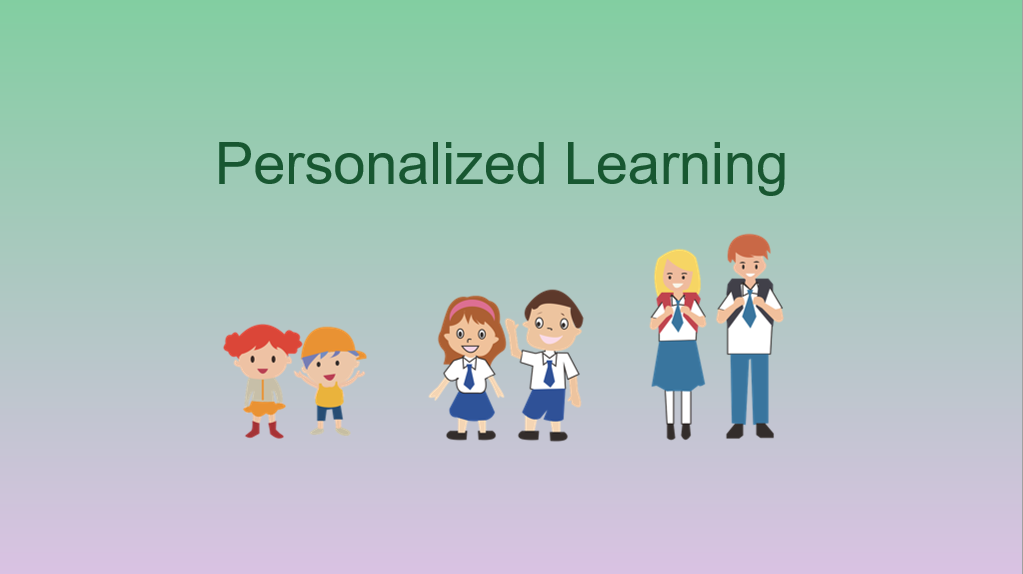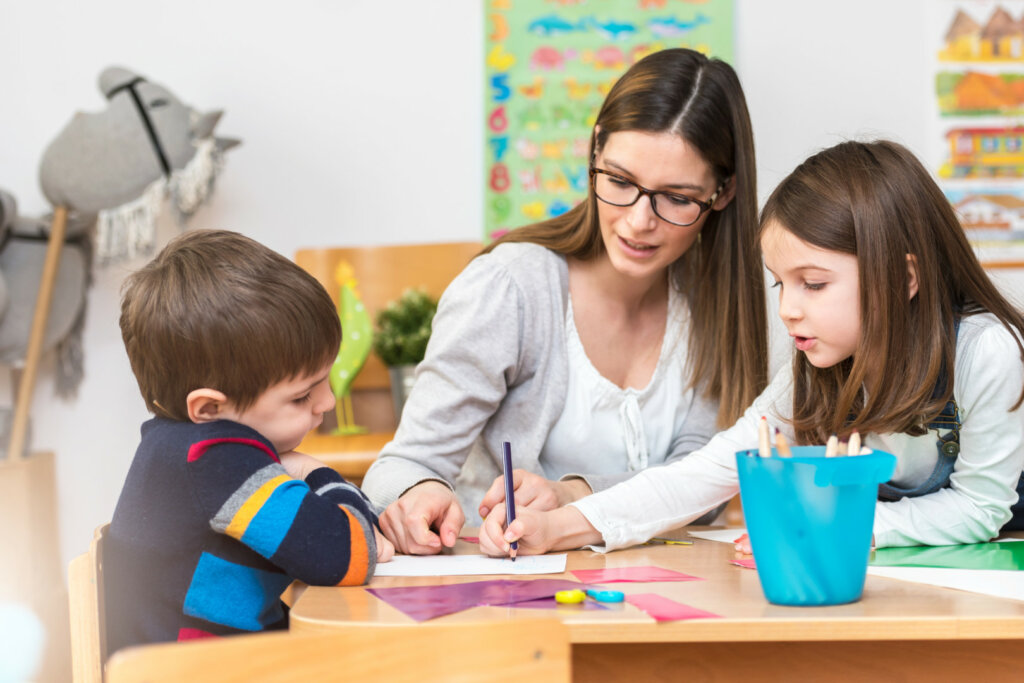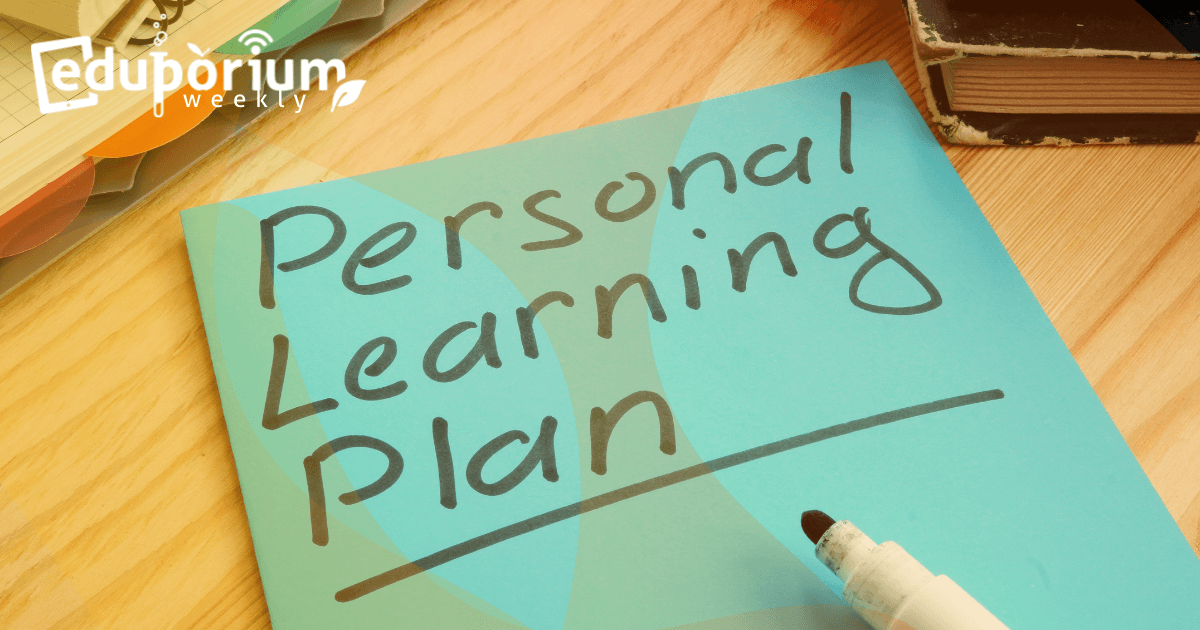The buzz around personalized learning isn’t simply that it's a trendy way to weave new approaches into the classroom. Personalized learning, though sometimes challenging to fully implement, has been shown to work. It can offer each child a tailor-made learning experience. In this instructional style, teachers create customized lessons, challenges, and experiences for each student (or sometimes groups of similar students). This approach helps children focus on their strengths, develop their weaknesses, and lets them learn in the way that’s best for them. Personalized learning shouldn't replace traditional classroom instruction—but, rather, enhance it and allow students to progress as best as possible.
Getting Personalized Learning Right
It’s easy to adopt the mindset that personalized learning can be beneficial for students. Simply doing a little bit here and there, however, is not all that effective. Since there is such a large range of students with unique learning needs, personalized learning is one way to ensure that they’re all getting what they need to excel. It also helps ensure that all of these students, despite their uniqueness, are engaged from start to finish. To ensure educators are getting personalized learning right, it starts with monitoring student engagement and progress through observation. How students are responding to personalized education gives teachers a good indication of how well their efforts are working and, ultimately, providing those students with a meaningful way to learn.
One key thing to ensure success with personalized learning is getting students to connect their learning with interests. Any opportunity to connect a lesson or a concept to students’ interests and talents is golden. Student projects tend to relate to their individual skills, talents, and knowledge, which is something to celebrate and encourage them for as they grow. Throughout these projects, students can also form their own questions to guide their learning and set some of their own milestones to give themselves some specific metrics to aim for. In a personalized learning environment, teachers tend to be the ones to set the guidelines. They then let students progress through them at their own pace and while making their own adjustments. Targeted instruction and data are also important in ensuring they meet the individual needs of students.
When taking part in personalized learning, kids should feel empowered to try different methods for solving problems and answering questions. Ideally, classrooms could contain different areas or stations dedicated to different types of learning. Some could be hands-on stations, inquiry stations, independent stations, and so on. Each of them, however, offer opportunities for teachers to encourage customized learning endeavors for their students. Students should also be plenty aware of why it is that they’re learning the concepts they’re learning and why they’re learning them in a particular way. The best personalized learning provides students with plenty of opportunities for receiving feedback and reflecting on what they’ve accomplished as well as what they still hope to do. This helps them fully understand why they're learning and in developing essential skills to succeed in and out of school.
Elements You Need for Personalized Learning
The idea of personalized learning doesn’t necessarily have a defined meaning. There are many different elements that go into creating personalized experiences and what works in one classroom might not be successful in another. Since it doesn't have a concrete definition, it’s taken time to settle on what to include when implementing personalized instruction. In theory, personalized learning could be as unique as the needs of each individual student. In reality, however, that is pretty difficult to achieve. It would be near impossible for teachers to create 25 different lesson plans, assignments, and/or projects for each student. So, while it’s beneficial for educators to personalize learning whenever possible, there are some ways of going about it that are a bit more general rather than completely unique to every child in the room.
Personalized learning can take place with or without the use of technology. If you ask us, EdTech is always a useful tool for boosting student engagement. When trying to personalize learning, whatever works best for them is what their teachers should do. To achieve effective personalized learning, educators should look to offer targeted instruction to each student. They can use software tools for this or let them choose the topics to cover. The right mix of student-directed learning and student input is effective. Teachers should also use any available data to determine how to personalize education. And, once that data becomes apparent, teachers should use it to improve their instruction.
Another component of personalized learning is having the option to use flexible content. This approach allows teachers and students to choose content based on each student’s learning needs. Altering how they deliver content to a student, for example, is one way teachers can choose to personalize education. Finally, in order to fully personalize the education experience, students need time to reflect on what they’ve done and be able to take ownership of their work. Not only are these important for their growth and understanding, it also helps them engage with their work on a deeper level. Through personalized instruction, students should see how their skills fit into their futures. This also often gets them to combine their own interests with the learning process.

Using Makerspaces to Support Personalized Learning
Makerspaces are almost as unique than all of the different types of learners in today’s classrooms. With all the possibilities makerspaces provide, it’s easy to understand how educators use them to their advantage in personalized education. Students and teachers can also make use of just about any learning tool they’d like in makerspaces, allowing them to create learning that’s truly personal. For starters, a lot of makerspace learning happens before or after school hours, so students don't necessarily have the same types of restrictions they are in the classroom. With this greater freedom, they’re more effectively able to guide their own learning and decide how they will approach just about everything. One popular example of this is developing digital portfolios, where they can store their project plans, progress, and even renderings of the results.
Many projects designed in makerspaces have a community component, which means they have a beneficial purpose in the community. In makerspaces, it can be as simple as helping students identify a problem they’re interested in and letting them use technology, like a 3D printer, for example, to design and manufacture a potentially permanent solution. Educators can also leverage school activities and events to spur some personalized makerspace experiences. Chances are there is usually something going on in the school that could benefit from having some decorations or displays and, if students are part of that event, they could enjoy the opportunity to create something cool to showcase what’s going on.
Teachers can also use makerspaces as an extension of classroom instruction, which has implications on personalizing learning. Even if every student learns the same way in the classroom, teachers can allow kids to use makerspace time to create their own unique additions to classroom work. This helps put a personal spin on things and helps students identify with the material they cover in school. Another way makerspaces can help personalize learning is by drawing on community activism. Helping students find something of interest and designing solutions can enhance learning as well. Maybe they could design something for an animal shelter or find another way to help. In any case, as students persevere, they can help through hands-on learning in the makerspace.
Using Personalized Learning to Boost Classroom Equity
The idea of personalizing learning for each individual student has gained a lot of momentum in the recent years. With that, more states and school districts are moving towards competency-based systems within which there is a greater focus on individualized learning for each child. It is in this method of schooling that students are able to move forward once they master a certain skill or topic rather than when the calendar turns. This gives them as much time as they need (or as little). It also creates a learning experience that’s more enjoyable, efficient, and exciting. Technology tends to play a role in both personalized and competency-based learning. It helps students demonstrate they have gained measurable knowledge and can transfer the objectives they’ve absorbed effectively, among other things.
Competency-based learning is also a smart way to boost classroom equity. Though students learn different things at different speeds, the end goal is for all of them to attain mastery. Not only can educators personalize the instruction they give to their students, they can personalize their assessment styles as well. During lessons and assessments, teachers can differentiate support for different students based on their needs and abilities. Ensuring every individual student has support helps dramatically shrink the equity gap and allows for students to be more engaged. Ultimately, it comes down to every child receiving what they need in order to develop to their full academic potential. This can be done when educators observe them and make adjustments that are unique to their personalities.
It’s important for teachers to remember that technology can be their friend when it comes to both personalized and competency-based instruction. It can help them develop more authentic assessments by giving students more options in showing what they’ve learned. It also helps students develop at their own pace while teachers manage the how they receive and engage with content. Finally, tech can help provide educators with critical feedback needed for measuring the success of personalized instruction. It can provide students with immediate feedback as well so that they know what they’re doing right and wrong. Most importantly, different types of technology can help educators address the different needs each of their students have, giving them the chance to meet students where they are, let them learn at their own pace, and still get ready for the future.

Creating Personalized Learning Plans for Students
There's value in personalized learning, but it can, of course, be daunting for teachers who create those experiences. One of the most reliable approaches is to keep as organized as possible by creating personalized learning plans. Of course, this is easier said than done, but it's a good way to provide personalization without feeling too overwhelmed. We recently came across a guide from Edmentum with steps to start and stick to personalized learning in the classroom. The first thing they should do is define their starting point. In this stage, educators can design or create any kind of assessment they want (they know their students best) to use to analyze where each individual student is and to help determine where they will each start out as well.
After that, teachers should take some time to set some realistic and attainable goals. This is a good time to think up some strategies for helping students overcome challenges. Then, once teachers know how their students learn best, they can help them understand their individual learning needs. They can use this during instruction and while creating lesson plans. Next, teachers can start weaving in learning activities that are in line with the interests of each student. At this point, teachers could see what each kid is passionate about, which can help shape their instruction. To cap off the first half of the personalization process, teachers can teach students how to track their work and progress and how to take ownership of it. There are plenty of easy ways to help kids do this, like simple grids for tracking assessment scores, for example.
Once students have spent some time engaged in personalized instruction, educators can start refining their focus areas and work more closely with students to identify any learning gaps. Now is a good time to use formative assessment techniques to fill those gaps and don’t be afraid to come back to this later in the process, too. Next, teachers could set up chats with their students and use these one-on-one sessions to provide direct feedback. This shows students how they can improve by thinking about their actions and where they want to be. Finally, at this point, teachers can create profiles for each student and let students take an active role. They can include the work they’re most proud of or even things they’d like to improve on and, then, students can share their progress with others, completing the journey of personalized learning!
For the latest EdTech, STEM, and 21st century education news, follow us on Twitter and Instagram. Like us on Facebook, too, or sign up for our newsletter for our latest product announcements and offerings. If you have an idea for an Eduporium Weekly theme, send us a message on social media or comment below.



